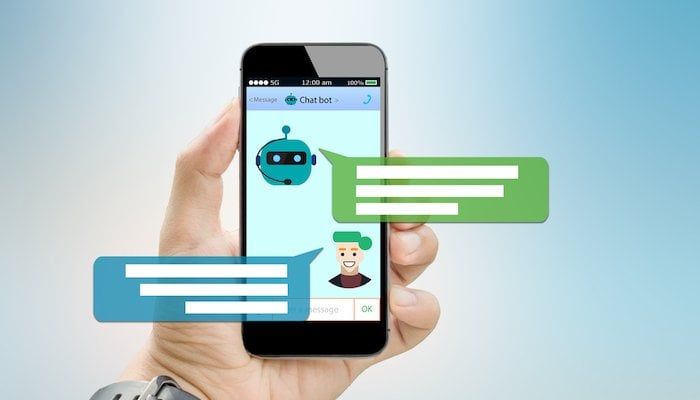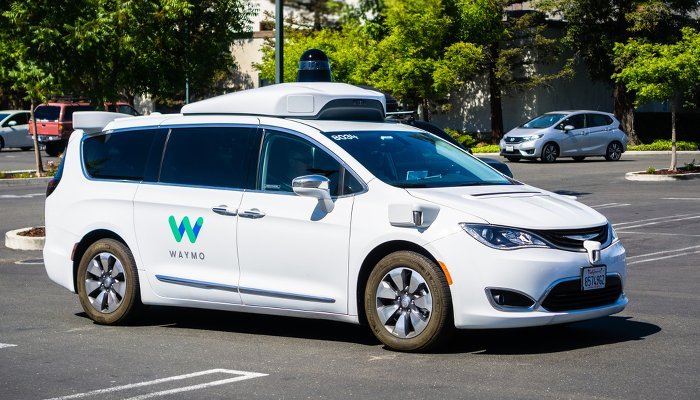
Lösegeldforderung nach Hackerangriff auf Unternehmen
Nach einem Hackerangriff auf die Technischen Werke Ludwigshafen (TWL) haben Unbekannte dem Unternehmen eine Lösegeldforderung im zweistelligen Millionenbereich zukommen lassen.

Nach einem Hackerangriff auf die Technischen Werke Ludwigshafen (TWL) haben Unbekannte dem Unternehmen eine Lösegeldforderung im zweistelligen Millionenbereich zukommen lassen.

Das Check Point Research Team beobachtet nach wie vor alarmierende Zahlen in Bezug auf Phishing im Zusammenhang mit der weltweiten Corona-Pandemie.

Die COVID-19-Pandemie hat uns allen eine neuerliche Lektion erteilt: Sicherheit geht tatsächlich jeden an. Als die Regierungen der Welt ihre „Stay at home“-Aufrufe veröffentlichten und immer mehr Menschen sich daran gewöhnen mussten, remote zu arbeiten, war „Zoom“ plötzlich in aller Munde.

In technischer Hinsicht hat sich in den letzten Jahren eine rasante Weiterentwicklung der Chatbot Technologie vollzogen. Gegenwärtig revolutionieren einfach zu bedienende, KI-gestützte Chatbot Plattformen die Art und Weise, wie Bots erstellt werden.

Mythen sind eigentlich vor allem eins: unterhaltsam. Allerdings gibt es auch gefährliche Mythen, wie die über Cybersicherheit. Denn ein falsches Verständnis darüber, wie eine Person sich digital schützen kann, führt mitunter zu verheerenden Sicherheitsverletzungen. Daher ist es an der Zeit, die sieben größten Cybersecurity-Mythen zu enttarnen und Unternehmen besser zu schützen.

Die Transformation der IT in Richtung agil entwickelter Cloud-Applikationen und skalierbarer Microservices erfordert ein schrittweises Vorgehen.

NetApp, ein Anbieter im Bereich Cloud Data Services, gibt heute die Ernennung von Cesar Cernuda zum Präsidenten von NetApp ab Juli bekannt. Er wird an CEO George Kurian berichten.

Die letzten 6 Wochen haben gezeigt, wie Cyberkriminelle und Advanced Persistent Threat (APT)-Gruppen Notlagen wie die COVID-19 Epidemie für gezielte Cyberangriffe auf kritische online-Dienste ausnutzen. Ein Statement von Paul Kaffsack, CEO von Myra Security.

Der Roboterwagen-Entwickler Waymo hat seine jüngste Finanzierungsrunde auf 3 Milliarden Dollar ausgebaut. Anfang März hatte die Google-Schwesterfirma die Geldspritze noch auf 2,25 Milliarden Dollar (gut zwei Mrd Euro) beziffert.

Twitter wird seinen Mitarbeitern erlauben, auch nach dem Ende der Corona-Krise uneingeschränkt im Homeoffice zu arbeiten.
Onlineportal von IT Management
We firmly believe that the internet should be available and accessible to anyone, and are committed to providing a website that is accessible to the widest possible audience, regardless of circumstance and ability.
To fulfill this, we aim to adhere as strictly as possible to the World Wide Web Consortium’s (W3C) Web Content Accessibility Guidelines 2.1 (WCAG 2.1) at the AA level. These guidelines explain how to make web content accessible to people with a wide array of disabilities. Complying with those guidelines helps us ensure that the website is accessible to all people: blind people, people with motor impairments, visual impairment, cognitive disabilities, and more.
This website utilizes various technologies that are meant to make it as accessible as possible at all times. We utilize an accessibility interface that allows persons with specific disabilities to adjust the website’s UI (user interface) and design it to their personal needs.
Additionally, the website utilizes an AI-based application that runs in the background and optimizes its accessibility level constantly. This application remediates the website’s HTML, adapts Its functionality and behavior for screen-readers used by the blind users, and for keyboard functions used by individuals with motor impairments.
If you’ve found a malfunction or have ideas for improvement, we’ll be happy to hear from you. You can reach out to the website’s operators by using the following email
Our website implements the ARIA attributes (Accessible Rich Internet Applications) technique, alongside various different behavioral changes, to ensure blind users visiting with screen-readers are able to read, comprehend, and enjoy the website’s functions. As soon as a user with a screen-reader enters your site, they immediately receive a prompt to enter the Screen-Reader Profile so they can browse and operate your site effectively. Here’s how our website covers some of the most important screen-reader requirements, alongside console screenshots of code examples:
Screen-reader optimization: we run a background process that learns the website’s components from top to bottom, to ensure ongoing compliance even when updating the website. In this process, we provide screen-readers with meaningful data using the ARIA set of attributes. For example, we provide accurate form labels; descriptions for actionable icons (social media icons, search icons, cart icons, etc.); validation guidance for form inputs; element roles such as buttons, menus, modal dialogues (popups), and others. Additionally, the background process scans all the website’s images and provides an accurate and meaningful image-object-recognition-based description as an ALT (alternate text) tag for images that are not described. It will also extract texts that are embedded within the image, using an OCR (optical character recognition) technology. To turn on screen-reader adjustments at any time, users need only to press the Alt+1 keyboard combination. Screen-reader users also get automatic announcements to turn the Screen-reader mode on as soon as they enter the website.
These adjustments are compatible with all popular screen readers, including JAWS and NVDA.
Keyboard navigation optimization: The background process also adjusts the website’s HTML, and adds various behaviors using JavaScript code to make the website operable by the keyboard. This includes the ability to navigate the website using the Tab and Shift+Tab keys, operate dropdowns with the arrow keys, close them with Esc, trigger buttons and links using the Enter key, navigate between radio and checkbox elements using the arrow keys, and fill them in with the Spacebar or Enter key.Additionally, keyboard users will find quick-navigation and content-skip menus, available at any time by clicking Alt+1, or as the first elements of the site while navigating with the keyboard. The background process also handles triggered popups by moving the keyboard focus towards them as soon as they appear, and not allow the focus drift outside it.
Users can also use shortcuts such as “M” (menus), “H” (headings), “F” (forms), “B” (buttons), and “G” (graphics) to jump to specific elements.
We aim to support the widest array of browsers and assistive technologies as possible, so our users can choose the best fitting tools for them, with as few limitations as possible. Therefore, we have worked very hard to be able to support all major systems that comprise over 95% of the user market share including Google Chrome, Mozilla Firefox, Apple Safari, Opera and Microsoft Edge, JAWS and NVDA (screen readers).
Despite our very best efforts to allow anybody to adjust the website to their needs. There may still be pages or sections that are not fully accessible, are in the process of becoming accessible, or are lacking an adequate technological solution to make them accessible. Still, we are continually improving our accessibility, adding, updating and improving its options and features, and developing and adopting new technologies. All this is meant to reach the optimal level of accessibility, following technological advancements. For any assistance, please reach out to